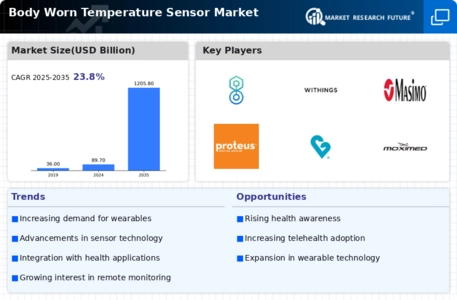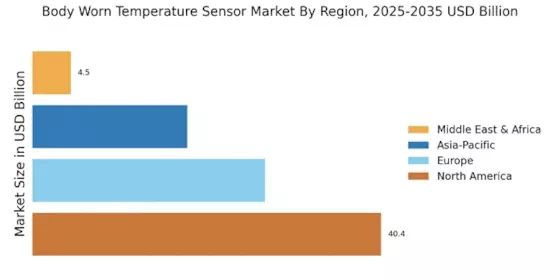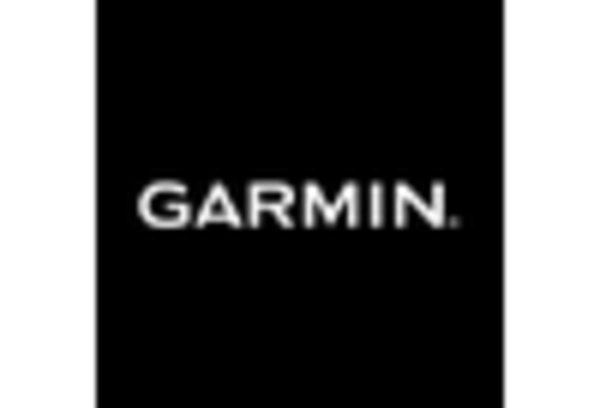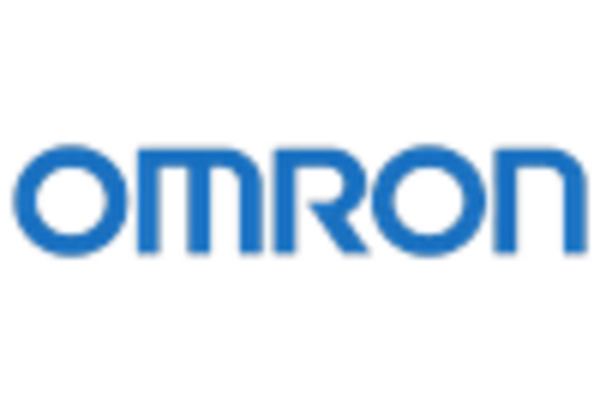Advancements in Sensor Technology
Technological advancements in sensor technology are likely to play a crucial role in the Body Worn Temperature Sensor Market. Innovations such as miniaturization, improved accuracy, and enhanced battery life are making these sensors more appealing to consumers and healthcare providers. For instance, the development of flexible and wearable sensors has expanded their application in various settings, from sports to clinical environments. The market is expected to witness a compound annual growth rate that reflects the increasing demand for high-performance sensors. As technology continues to evolve, the potential for new applications and improved user experiences may further stimulate market expansion.
Integration with Telehealth Services
The integration of body worn temperature sensors with telehealth services appears to be a pivotal driver in the Body Worn Temperature Sensor Market. As healthcare systems increasingly adopt remote monitoring solutions, these sensors facilitate real-time data transmission to healthcare providers. This capability enhances patient management, particularly for chronic conditions, and supports timely interventions. The market for telehealth is projected to reach substantial figures, indicating a growing reliance on remote health monitoring. Consequently, the synergy between body worn temperature sensors and telehealth services is likely to propel market growth, as patients and providers alike seek efficient, data-driven healthcare solutions.
Increased Focus on Preventive Healthcare
An increased focus on preventive healthcare is significantly influencing the Body Worn Temperature Sensor Market. As healthcare paradigms shift towards prevention rather than treatment, the demand for devices that facilitate early detection of health issues is rising. Body worn temperature sensors play a crucial role in this preventive approach by enabling individuals to monitor their health continuously. Market trends indicate that consumers are increasingly seeking tools that empower them to take charge of their health. This shift towards preventive measures is likely to drive the adoption of body worn temperature sensors, as they provide valuable data that can inform health decisions and interventions.
Growing Demand for Health Monitoring Devices
The growing demand for health monitoring devices is a significant driver in the Body Worn Temperature Sensor Market. As individuals become more health-conscious, the need for continuous monitoring of vital signs, including body temperature, has surged. This trend is particularly evident among fitness enthusiasts and aging populations who seek proactive health management solutions. Market data suggests that the wearable health technology sector is experiencing rapid growth, with body worn temperature sensors being a key component. This increasing consumer interest in personal health monitoring is likely to sustain the momentum of the market, as more individuals invest in devices that provide real-time health insights.
Regulatory Support for Wearable Technologies
Regulatory support for wearable technologies is emerging as a vital driver in the Body Worn Temperature Sensor Market. Governments and health organizations are recognizing the potential of wearable devices in enhancing public health outcomes. Initiatives aimed at promoting the adoption of health technologies are likely to create a favorable environment for market growth. For instance, regulatory bodies may streamline approval processes for innovative health monitoring devices, thereby encouraging manufacturers to invest in research and development. This supportive regulatory landscape could lead to an influx of new products in the market, further stimulating consumer interest and adoption of body worn temperature sensors.

















Leave a Comment